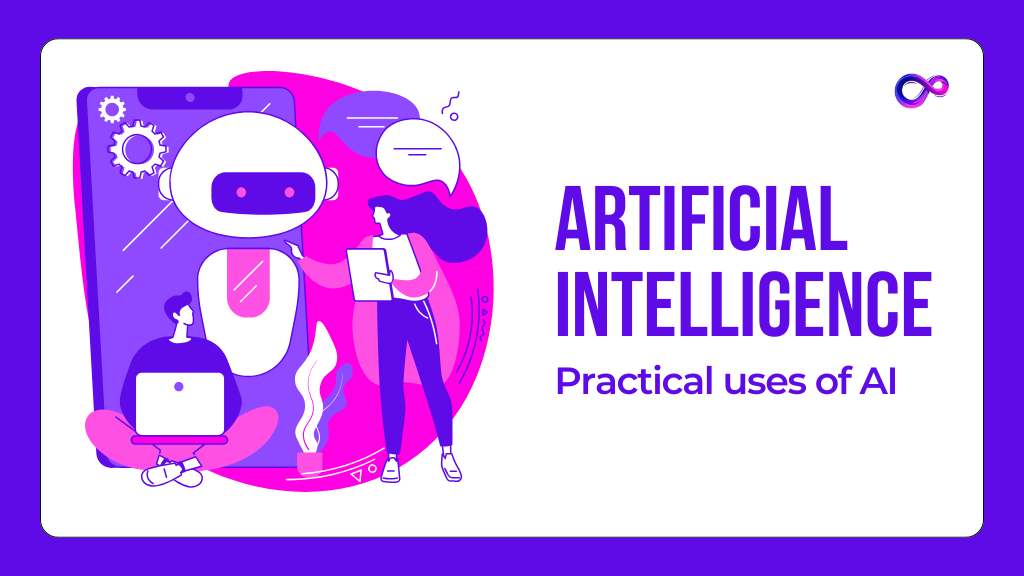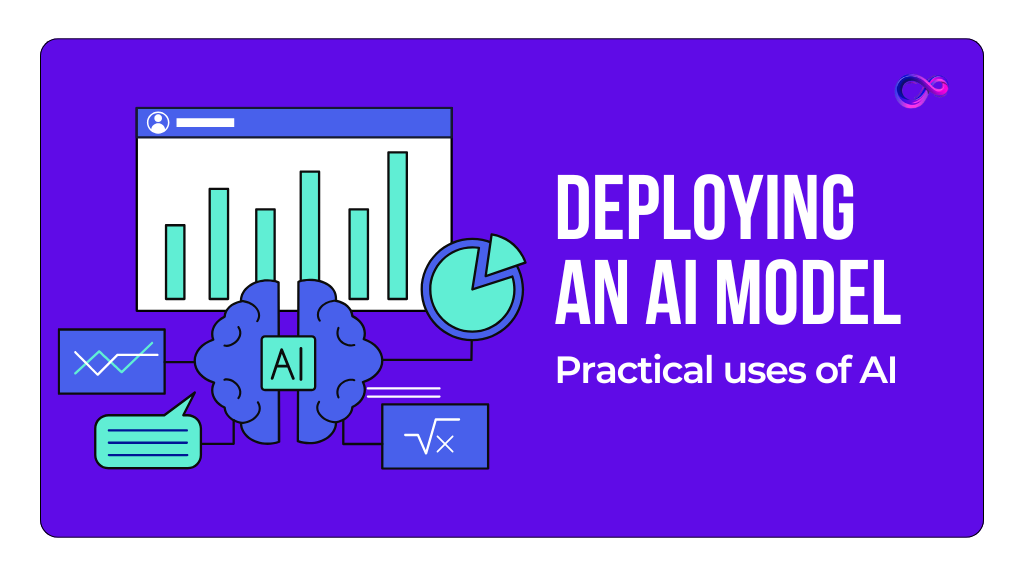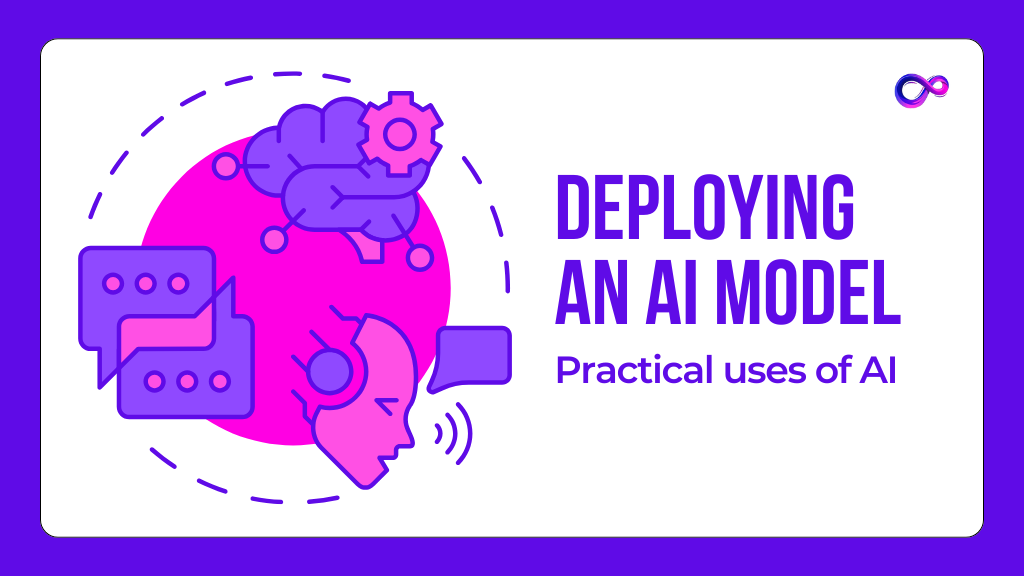Introduction
Deploying an AI model is a crucial step in bringing artificial intelligence solutions to real-world applications. It involves making your trained model available for use in various environments, ensuring it operates efficiently and effectively. Before discussing how to deploy an AI model, it’s important to first understand creation and training of AI model, as these are the foundational steps that lead to successful deployment.
Understanding AI Model Deployment
AI model deployment refers to the process of integrating a trained machine learning model into a production environment where it can make predictions or decisions based on new data. This step is essential for leveraging the model’s capabilities in practical applications, such as web services, mobile apps, or embedded systems. Effective deployment ensures that the model performs well under real-world conditions and can handle the expected workload.
Before we dive into deployment, it’s crucial to know how to create an AI model from scratch. Understanding how to create an AI model is vital, as it guides the development of the architecture, selecting appropriate algorithms, and preparing the model for training.

Steps to Create and Train an AI Model
Before deploying an AI model, it’s important to understand the foundational steps of creating and training the model. Here’s a closer look at these essential processes:
1. Define the Problem and Objectives
Start by clearly defining the problem you want to solve with AI. Set specific objectives and determine the desired outcomes. This clarity will guide the entire development process. If you’re unsure about where to begin, learning creation of AI model will give you insights into the initial steps, such as identifying your problem statement and collecting data.
2. Gather and Preprocess Data
Collect relevant data that represents the problem domain. Preprocess this data by cleaning, normalizing, and transforming it into a suitable format for training. High-quality data is crucial for building an effective model. Without understanding how to train an AI model, you may overlook essential preprocessing steps that affect the model’s performance during training.
3. Select an Appropriate Model and Algorithm
Choose a machine learning algorithm that aligns with your problem type (e.g., classification, regression). Design the model architecture accordingly, considering factors like complexity and interpretability. This is where knowing how to create an AI model will be particularly useful, as it helps you choose the right architecture based on your project’s goals.
4. Train the Model
Use the prepared data to train the model, allowing it to learn patterns and relationships. Monitor the training process to prevent overfitting and ensure convergence. This phase is all about how to train an AI model effectively. Training requires a balance of proper data handling, model tuning, and evaluation to achieve the best results.
5. Evaluate the Model
Assess the model’s performance using validation data. Utilize metrics relevant to your objectives to determine its effectiveness. If necessary, iterate on the model design and training process to improve results.

Preparing for Deployment
Once the model is trained and evaluated, preparation for deployment begins.
1. Optimize the Model
Streamline the model to enhance performance. This may involve techniques like quantization or pruning to reduce computational requirements without significantly affecting accuracy. Optimization is an important step before deploying any AI model, ensuring that it performs efficiently in a real-world environment.
2. Select a Deployment Environment
Choose an environment that aligns with your application’s requirements. Options include cloud services, on-premises servers, or edge devices. Consider factors like scalability, latency, and resource availability.
3. Containerize the Model
Encapsulate the model and its dependencies into a container (e.g., using Docker). This approach ensures consistency across different deployment platforms and simplifies the management of the deployment process.
Deploying the AI Model
With preparations complete, proceed to deploy the model.
1. Set Up the Deployment Infrastructure
Establish the necessary infrastructure, such as servers or cloud instances, to host the model. Ensure that the environment meets the model’s computational and storage requirements.
2. Integrate the Model into the Application
Knowing how to Integrate AI into an App is an important thing. Connect the deployed model to your application, enabling it to receive input data and provide predictions. This integration can be achieved through APIs or direct embedding, depending on the application’s architecture.
3. Monitor and Maintain the Model
Continuously monitor the model’s performance in the production environment. Implement logging and alerting mechanisms to detect issues promptly. Regular maintenance, including updating the model with new data and retraining as necessary, ensures sustained performance.

Challenges in AI Model Deployment
Deploying AI models comes with its set of challenges.
1. Scalability
Ensuring the model can handle increased loads without performance degradation is crucial. Implementing scalable infrastructure and load balancing can address this challenge.
2. Latency
Minimizing the time between input and prediction is vital for real-time applications. Optimizing the model and infrastructure can help achieve low latency.
3. Security
Protecting the model and data from unauthorized access is essential. Implementing robust security measures, such as encryption and access controls, safeguards the deployment.
Best Practices for Successful Deployment
Adhering to best practices enhances the deployment process.
1. Version Control
Maintain version control for both the model and its codebase. This practice facilitates tracking changes and reverting to previous versions if needed.
2. Automated Testing
Implement automated tests to validate the model’s performance and integration within the application. This approach ensures reliability and early detection of issues.
3. Documentation
Provide comprehensive documentation detailing the model’s architecture, training process, and deployment steps. Well-documented models are easier to maintain and update.
FAQs
1. What is the importance of deploying an AI model?
Deploying an AI model allows it to be used in real-world applications, enabling automated decision-making and predictions based on new data.
2. How does model optimization affect deployment?
Optimizing a model reduces its computational requirements, leading to faster inference times and lower resource consumption during deployment.
Conclusion
Deploying an AI model involves a series of well-defined steps, from creation and training to optimization and integration into the target environment. By following best practices and addressing potential challenges proactively, you can ensure that your AI model operates effectively in real-world applications, delivering valuable insights and functionality.



